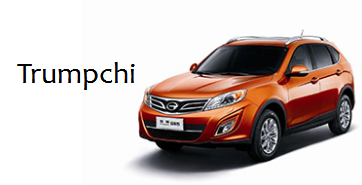Body correction refers to the process of repairing the parts damaged by accident or fatigue to the technical standard "state" when the vehicle leaves the factory through certain external force. For the word "state", it has two meanings. "Shape" refers to a more intuitive appearance and shape, while "state" is a more abstract and deeper concept, such as whether the internal molecular structure of metal can be rearranged according to the original position, whether the internal stress is completely released, etc., which will directly affect the function and life of the vehicle after repair. Structural parts refer to the components that play the main supporting and bearing role on the body, and are the installation foundation of body parts, which are common in the longitudinal beam, cross beam, door post, lower side beam and other parts. This kind of component usually has very high strength, and the structure is mostly closed box section, so when repairing, we should take certain means and measures, and use reasonable technology to repair.

Try to use in place repair process
When the integral body is calibrated, the method of in place repair shall be adopted as far as possible. In this way, when pulling, it can effectively take out some deformed parts around, and at the same time, it can save a lot of time due to less disassembly and assembly of components. Figure 1a is a damaged front bar frame, which is a closed box section member and is connected with the front longitudinal beam by screws. Usually, many sheet metal maintenance technicians will remove the skeleton and correct it, which is actually unscientific. After the front bar frame is impacted, the transmission of impact force will cause the front of the longitudinal beam to deform. It is difficult to adopt a moderate corrective force to repair the skeleton without proper fixation after removal. In addition, the front longitudinal beam needs to be repaired after the skeleton is repaired. So a better way is to repair in place. Use a puller to exert a gentle force on the deformed part which is opposite to the impact direction, and then use a suitable crowbar to extend from the opening part of the edge to repair some concave parts on the side of the skeleton, which will obtain a very good effect.
Some concave parts on the side of the skeleton shall be trimmed
Of course, this kind of in place repair method can also be used in many cases for non load bearing body structure parts. The non load-bearing body is the traditional girder body. Its frame is an independent component, which is generally made of thick material. It is a box shaped component formed by the reverse welding of "U" steel or two "U" steel, which has very high strength. Generally, it can be divided into frame frame, trapezoid frame and other types, which are connected with the body by bolts. When this kind of frame is deformed by impact, the usual repair method is to remove the cab and cargo compartment, and then rectify the frame separately. In fact, it is difficult to have a good anchoring method for such frame even after the above components are removed, so for some damage types of deformation, figure 2A can be used for in place repair. When the side bending of the frame is caused by the impact, an I-beam (rail steel) with sufficient strength can be placed on one side of the vehicle, and it can be padded to the level of the frame with a horse stool or a wood block, and the I-beam and the front and rear parts of the frame can be fixed with a chain, and the bending parts can be corrected with the method of applying thrust by the hydraulic top.
At the same time, the method of Fig. 2B can also be used for repair. In most cases, this kind of bending will appear from a certain cross beam of the frame, resulting in the deformation of both sides of the beam at the same time. Once there is bending on both sides of the girder and there is no beam in the middle, the separated hydraulic top shall be used to support the bending parts on both sides to the original width, so that when the thrust is applied, it can be used as a beam to transfer the force to the other side, so as to facilitate the simultaneous repair of both sides. This method can also be used for beams bent up and down. When correcting, I-beam can be directly placed at the lower part of the beam and the same repair method can be used. However, when rectifying, I-beam should be close to the frame as much as possible so as to obtain stable rectifying force. When using the chain to fix the girder, appropriate wood or iron blocks should also be used to prevent deformation.
Copyright By © Jiangsu Halreal Vehicle Industry Co., Ltd. Powered by Yicheng Network